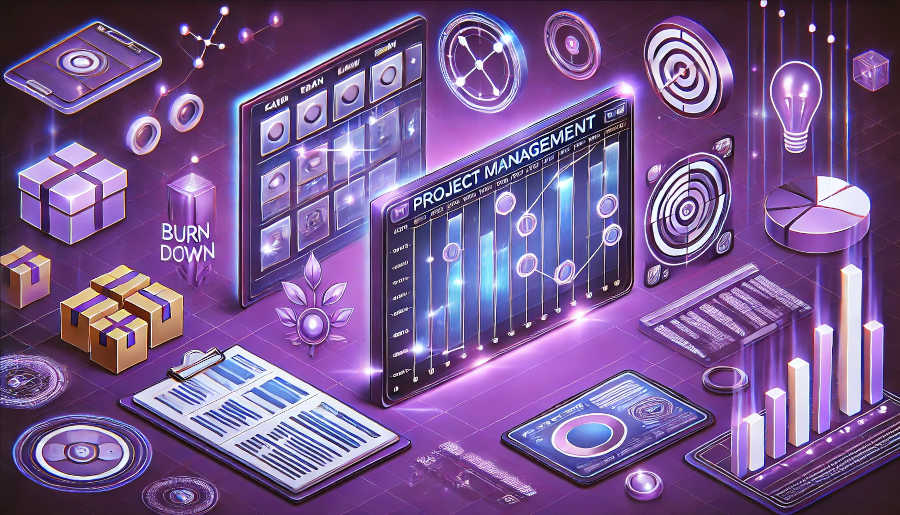Understand the Core Principles of IPD
Before diving into the intricacies of the IPD project flowchart, it is essential to grasp the core principles of Integrated Product Development. IPD emphasizes collaboration, concurrent engineering, and iterative development. Unlike traditional linear approaches, IPD encourages cross-functional teams to work together from the outset, ensuring that all perspectives are considered early in the process. This collaborative mindset is reflected in the flowchart, which often includes feedback loops and parallel processes. Understanding these principles will help you interpret the flowchart more effectively and appreciate its purpose in guiding the project.
The IPD flowchart is not just a static diagram; it is a dynamic tool that evolves as the project progresses. It captures the interdependencies between different tasks and highlights critical decision points where cross-functional input is required. By understanding the core principles of IPD, you can better appreciate why certain tasks are sequenced the way they are and why collaboration is emphasized at specific stages. This foundational knowledge will enable you to use the flowchart as a living document that guides your team through the complexities of product development.
Moreover, the core principles of IPD underscore the importance of flexibility and adaptability. The flowchart is designed to accommodate changes and iterations, reflecting the iterative nature of product development. As you become more familiar with these principles, you will be better equipped to navigate the flowchart and make informed decisions when adjustments are needed. This understanding will also help you communicate the rationale behind the flowchart to your team, fostering a shared commitment to the IPD approach.
Familiarize Yourself with the Flowchart Structure
The IPD project flowchart typically consists of several key components, including stages, gates, tasks, and decision points. Each stage represents a major phase of the product development process, such as concept development, design, testing, and launch. Gates, on the other hand, are checkpoints where the project is evaluated to determine whether it should proceed to the next stage. Tasks are the specific activities that need to be completed within each stage, while decision points are moments where critical choices are made based on input from various stakeholders.
To master the IPD flowchart, it is crucial to familiarize yourself with its structure and terminology. Start by studying the flowchart in detail, paying close attention to how the different components are interconnected. Look for patterns in the sequencing of tasks and the placement of gates and decision points. This will help you understand the logic behind the flowchart and how it guides the project from inception to completion. Additionally, take note of any symbols or annotations used in the flowchart, as these often convey important information about task dependencies, timelines, or resource requirements.
Once you are comfortable with the flowchart's structure, practice mapping out a hypothetical project using the IPD framework. This exercise will help you internalize the flow of tasks and decisions, making it easier to apply the flowchart to real-world projects. As you become more proficient, you will be able to identify potential bottlenecks or areas where additional resources may be needed. This proactive approach will enhance your ability to manage the project effectively and ensure that it stays on track.
Leverage Cross-Functional Collaboration
One of the hallmarks of IPD is its emphasis on cross-functional collaboration, and the flowchart is designed to facilitate this. Each stage of the flowchart involves input from multiple disciplines, such as engineering, marketing, manufacturing, and quality assurance. As a project manager, your role is to ensure that all team members are aligned and contributing effectively to the tasks at hand. This requires clear communication, active listening, and the ability to mediate between different perspectives.
To leverage cross-functional collaboration effectively, start by identifying the key stakeholders for each stage of the flowchart. Engage them early in the process and ensure that they understand their roles and responsibilities. Use the flowchart as a visual aid during team meetings to discuss task dependencies, timelines, and potential challenges. Encourage open dialogue and foster a culture of mutual respect, where team members feel comfortable sharing their insights and concerns. This collaborative approach will not only improve the quality of the project but also enhance team morale and cohesion.
Furthermore, the flowchart can serve as a powerful tool for managing conflicts and resolving disputes. When disagreements arise, refer to the flowchart to identify the root cause of the issue and determine the best course of action. By grounding discussions in the flowchart, you can keep the focus on the project's objectives and avoid getting sidetracked by personal biases or departmental agendas. This disciplined approach will help you maintain momentum and ensure that the project progresses smoothly through each stage.
Use the Flowchart as a Communication Tool

The IPD project flowchart is not just a planning tool; it is also an invaluable communication tool. It provides a clear and concise overview of the project, making it easier to convey complex information to stakeholders at all levels. Whether you are presenting to senior leadership, briefing your team, or updating external partners, the flowchart can help you articulate the project's status, challenges, and next steps in a way that is easy to understand.
To use the flowchart as a communication tool, start by tailoring your presentation to your audience. For example, when speaking to executives, focus on high-level milestones and decision points, highlighting the strategic implications of the project. When addressing your team, delve into the details of specific tasks and timelines, providing guidance on how to overcome any obstacles. By adapting your message to the needs of your audience, you can ensure that the flowchart serves as an effective medium for communication.
In addition to formal presentations, consider using the flowchart in informal settings, such as team huddles or one-on-one meetings. Displaying the flowchart in a shared workspace or incorporating it into project management software can keep it top of mind for everyone involved in the project. Encourage team members to refer to the flowchart regularly and use it as a reference point for discussions and decision-making. This constant engagement with the flowchart will reinforce its importance and help keep the project on track.
Monitor Progress and Adjust as Needed
The IPD project flowchart is a dynamic tool that should be updated regularly to reflect the project's progress. As tasks are completed and decisions are made, the flowchart provides a visual representation of how the project is evolving. Monitoring progress against the flowchart allows you to identify any deviations from the plan and take corrective action before issues escalate. This proactive approach is essential for maintaining control over the project and ensuring that it stays aligned with its objectives.
To monitor progress effectively, establish a routine for reviewing the flowchart with your team. This could be done weekly, bi-weekly, or at key milestones, depending on the project's complexity and timeline. During these reviews, compare the actual progress against the planned tasks and timelines, noting any discrepancies. Discuss the reasons for any delays or changes and determine the best way to address them. By involving the entire team in this process, you can ensure that everyone is aware of the project's status and is working towards the same goals.
In addition to tracking progress, the flowchart can also help you anticipate future challenges and plan accordingly. For example, if you notice that a particular task is taking longer than expected, you can adjust the timeline for subsequent tasks to accommodate the delay. Similarly, if a decision point reveals new information that impacts the project's direction, you can revise the flowchart to reflect the updated plan. This flexibility is one of the key strengths of the IPD approach and is essential for navigating the uncertainties of product development.
Conclusion
Mastering the IPD project flowchart is a critical skill for anyone involved in product development. By understanding the core principles of IPD, familiarizing yourself with the flowchart's structure, leveraging cross-functional collaboration, using the flowchart as a communication tool, and monitoring progress, you can effectively guide your team through the complexities of the project. The flowchart is not just a static diagram; it is a dynamic tool that evolves with the project, providing a clear roadmap for success. By following the ten practical tips outlined in this article, you can quickly become proficient in using the IPD flowchart and lead your team to achieve outstanding results.
FAQ
1.What is the difference between IPD and traditional project management?
IPD emphasizes cross-functional collaboration, concurrent engineering, and iterative development, whereas traditional project management often follows a linear, sequential approach. IPD integrates input from various disciplines early in the process, allowing for more holistic decision-making and faster problem resolution.
2.How can I ensure that my team stays aligned with the IPD flowchart?
Regularly review the flowchart with your team, use it as a communication tool in meetings, and encourage team members to refer to it frequently. Clear communication, active engagement, and a shared understanding of the flowchart will help keep everyone aligned and focused on the project's objectives.
3.What should I do if the project deviates from the flowchart?
If the project deviates from the flowchart, assess the reasons for the deviation and determine the best course of action. Update the flowchart to reflect any changes in the plan and communicate these adjustments to your team. Flexibility and adaptability are key to successfully navigating deviations and keeping the project on track.
ARTICLE TITLE :10 practical tips to help you quickly master the IPD project flowchart ,AUTHOR :ITpmlib

















